
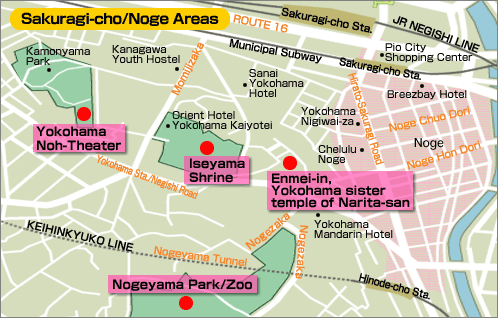
- Elevators suitable for wheelchairs
- Restrooms suitable for wheelchairs
- Parking for Wheelchair Users
- Slope-ways
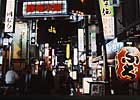
Noge |
On a street
lined with traditional Japanese restaurants/leisure spots including
Yakitori shops, Oden shops, casual Japanese restaurants, Karaoke shops
etc, you can see the red lanterns swaying. In Yokohama's red lantern
dining area, spread out over the hillside with Sakuragi-cho in the
back, you can enjoy affordable food at your leisure. Get off at Sakuragi-cho Sta.(JR or Yokohama City Subway) |
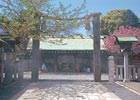
Iseyama Shrine (Iseyama Kotai Jingu) |
A shrine,
built in 1870, dedicated to the Sun Goddess "Amaterasu Omikami".
It is usually called by its nickname, "Oise-san (Ise Shrine)
of Kanto (the East)". It is the grand guardian god shrine for
Yokohama drawing large crowds of people making their first pilgrimage
of the year during the New Year holidays to pray for their happiness
and prosperity in the coming year. It is visited throughout the year
for such occasions as the celebration of a child reaching the ages
of three, five and seven as well as flower-viewing. 8:00-20:00/Open year round A 15-minute walk from the Minatomirai Station (Minatomirai Line); a 10-minute walk from the Sakuragi-cho Station (JR or Yokohama City Subway); a 10-minute walk from the Hinode-cho Station (Keihin Kyuko Line) |
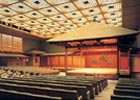
Yokohama Noh Theater |
The main
stage has been restored to the "Somei Noh Stage" originally
built by the feudal lord 'Maeda' of the 'Kaga' Clan. Tours in the
theater are allowed only when there are no performances of Noh play.
(Please confirm in advance.) Closed on one Monday every month Free tou 9:00- 20:00 (Tour times of the main stage when there is no event). Closed: Facility inspection day. A 15-minute walk from the Sakuragi-cho Station (JR or Yokohama City Subway); an 18-minute walk from the Hinode-cho Station (Keihin Kyuko Line); a 5-minute walk from the Tobe 1-chome bus stop on City Bus #47 or 57, departing from the Sakuragi-cho Station; a 3-minute walk from the Kaiyohtei-mae bus stop on the Hama-chan Bus, departing from the Sakuragi-cho Station |
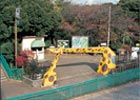
Nogeyama Park |
Built
on the site of a rich merchant's villa in the Meiji Era, this park
is thronged with flower-viewers in the spring time. The zoo in the
park, opened in 1951, keeps more than 830 animals of about 130 varieties
and is popular with children., Admission Free 9:30~16:30/Closed on Mondays (The following day if it falls on a national holiday) A 15-minute walk from the Sakuragi-cho Station (JR or Yokohama City Subway); a 10-minute walk from the Hinode-cho Station (Keihin Kyuko Line); a 1-minute walk from the Nogeyama Dobutsuen-mae (Nogeyama Zoo) bus stop on City Bus #89, departing from the Sakuragi-cho Station |
|
Enmei-in,
Yokohama sister temple of Narita-san |
The main
statue is a Fudomyoo. The chapel of the temple was erected in the
precinct of Fumon-in Temple located in Ota-mura (present Nishinakamachi
in Minami ward), receiving a part of the spirit from the main temple
of Narita-san Shinshoji Temple in 1870. In 1893, the present site
was donated from Kiuemon Takashima to the temple, to which the temple
was moved, at which time the temple was newly named Narita-san Kyokai.
Afterward in 1893, it was re-named Enmei-in. It is commonly known
as Noge Fudoson. A 10-minute walk from the Sakuragi-cho Station (JR or Yokohama City Subway); a 10-minute walk from the Hinode-cho Station (Keihin Kyuko Line); a 5-minute walk from the Nogezaka bus stop on City Bus #47, 57 or 89, departing from the Sakuragi-cho Station |





